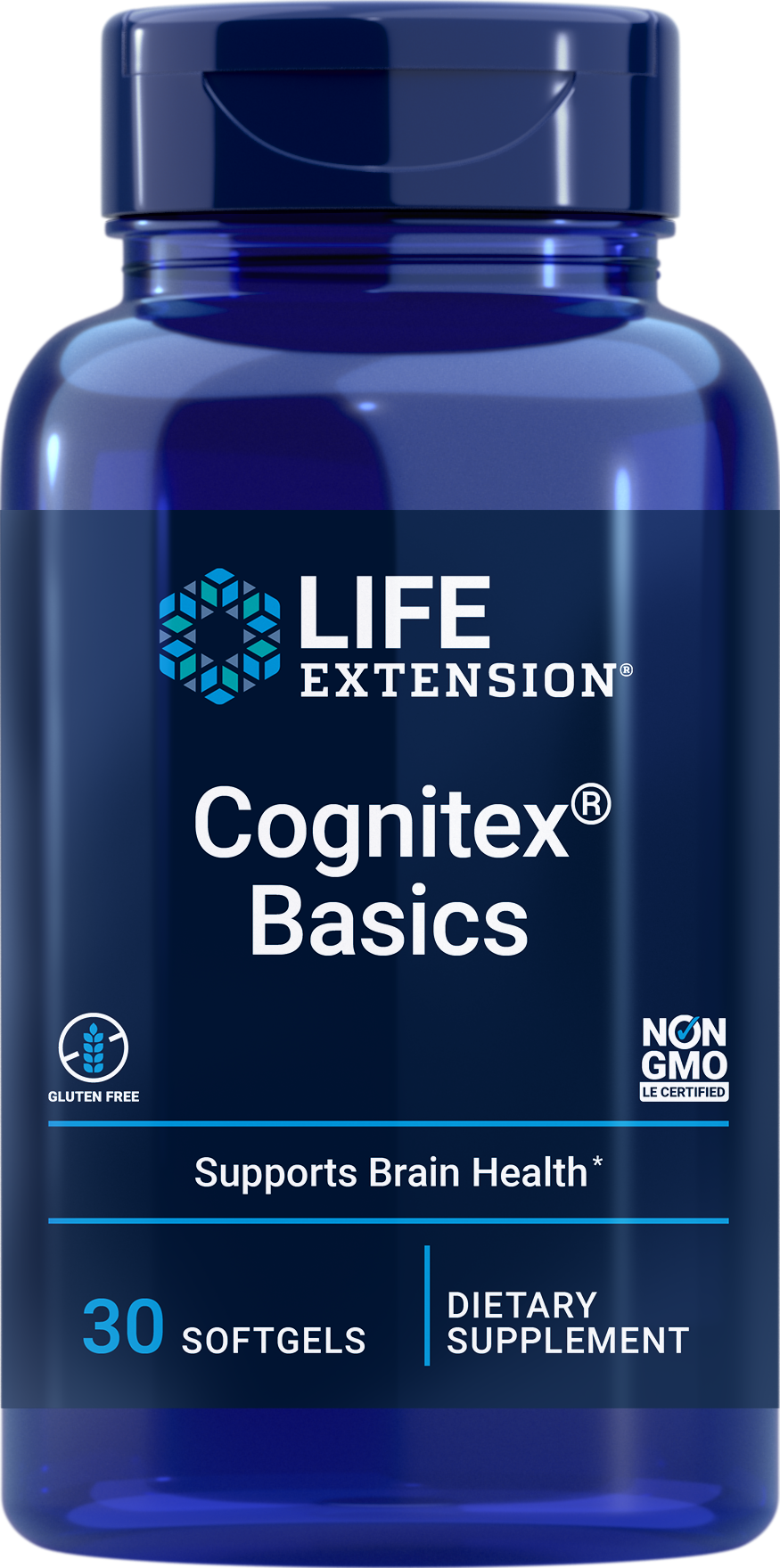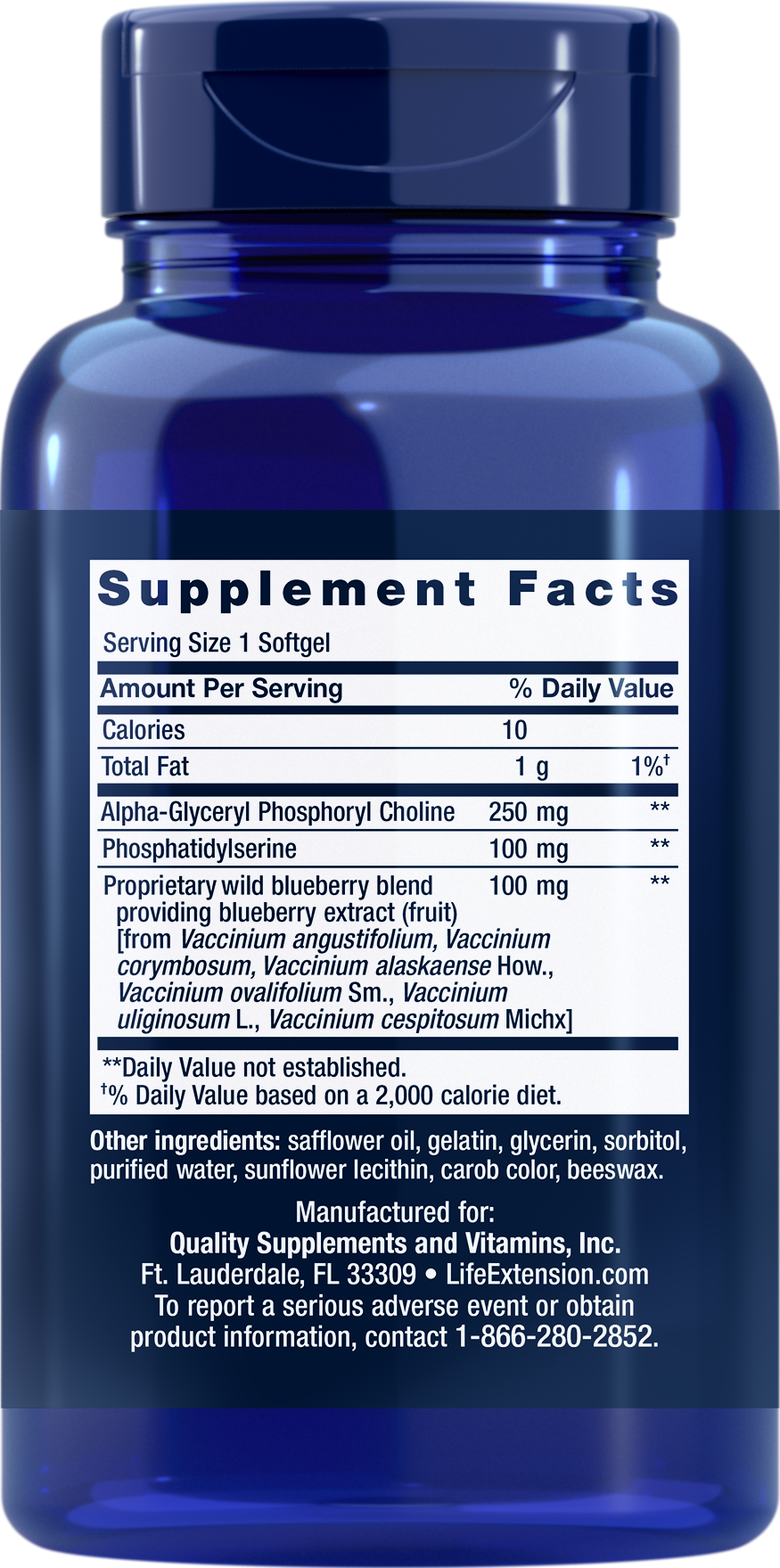Cognitex® Basics
Lay a strong foundation for cognitive health
Cognitex® Basics
Lay a strong foundation for cognitive health
For you, if you are interested in brain health and youthful memory
The nutrients in Cognitex® Basics (Alpha GPC) can:
- Encourage youthful memory health
- Help maintain brain cell integrity and connections
- Promote healthy cognitive function
- Support a healthy inflammatory response to support brain health
Maintaining optimal brain health is crucial to keeping healthy cognitive function. Cognitex® Basics (Alpha GPC) offers two key compounds for brain health (difficult to obtain from a healthy diet) in a unique formula. These targeted nutrients, Alpha-GPC and Phosphatidylserine, support memory and cognitive support.
- Netherlands

on orders over € 69
We have a 100 days return policy, not the standard 30 days!
Order before 11:00 CET, for same day shipping (Mon-Fri)
We can help you in 6 languages
Health benefits at a glance:
Maintaining cognitive health is essential at any age. Cognitex® Basics (Alpha GPC) is a foundational formula for healthy brain structure and function.
The formula provides three nutrients that can support brain cells and cognitive function.
Why it works:
The essential brain nutrients in this formula are:
- 250 mg alpha-glyceryl phosphorylcholine (Alpha-GPC) can deliver nutrition to create the neurotransmitter acetylcholine
- 100 mg phosphatidylserine (PS) can support brain-cell-to-brain-cell connections
- 100 mg wild blueberry fruit extract
The science behind the product:
Healthy levels of acetylcholine with Alpha-GPC
Maintaining healthy levels of the neurotransmitter acetylcholine is essential to cognitive function. (1)
Alpha-glyceryl phosphoryl choline (Alpha-GPC) is a crucial building block for the production of acetylcholine in the brain to support healthy cognition. (2-4)
Phosphatidylserine supports brain cell structure and function
Phosphatidylserine (PS) is an essential component of healthy cell membranes. It's critical to brain metabolism and function and supports the communication between the brain and the cells. (5,6)
PS can promote healthy cognition and memory, concentration, attention and more. (7-11)
Enhance brain function with Blueberry
Blueberry phytonutrients can help inhibit age-related decline in cognitive and motor function. (12,13)
Wild blueberry extracts have been shown to inhibit oxidative and inflammatory factors in brain cells to support memory health. (14,15)
How to use:
Please take according to the dosage and use guidelines under supplement facts, or as recommended by a healthcare practitioner.
Serving size 1 softgel
Servings per container 30
Amount per serving:
| Calories | 10 |
| Calories from fat | 5 |
| Total Fat | 1 g |
| Alpha-Glyceryl Phosphoryl Choline | 250 mg |
| AuroraBlue® Wildcrafted blueberry complex | 100 mg |
| [Alaska blueberry (Vaccinium alaskaense How.), Oval-leaf blueberry (Vaccinium ovalifolium Sm.), Alpine blueberry (Vaccinium uliginosum L.), Dwarf bilberry (Vaccinium cespitosum Michx.)], (fruit, leaf, stem) | |
| Phosphatidylserine | 100 mg |
Other ingredients: safflower oil, gelatin, glycerin, sunflower lecithin, purified water, sorbitol, carob color, yellow beeswax, silica, maltodextrin.
Non-GMO
AuroraBlue® is a registered trademark of Denali BioTechnologies, Inc.
Dosage and use:
Take one (1) softgel daily, with or without food, or as recommended by a healthcare practitioner.
Warnings:
- Keep out of reach of children.
- Do not exceed recommended dose.
- Do not purchase if outer seal is broken or damaged.
- When using nutritional supplements, please consult with your physician if you are undergoing treatment for a medical condition or if you are pregnant or lactating.
- Curr Opin Neurobiol. 2006;16(6):710-5.
- Food Chem Toxicol. 2011;49(6):1303-15.
- Curr Alzheimer Res. 2013;10(10):1070-9.
- Ann N Y Acad Sci. 1994;717:253-69.
- Prog Lipid Res. 2014;56:1-18.
- Annu Rev Biophys. 2010;39:407-27.
- Nutr Neurosci. 2008;11(3):103-10.
- Neurobiol Aging. 1981;2(3):209-13.
- Aging (Milano). 1993;5(2):123-33.
- Neurology. 1991;41(5):644-9.
- Nutrition. 2015;31(6):781-6.
- Ann N Y Acad Sci. 2007;1100:470-85.
- J Agric Food Chem. 2010;58(7):3996-4000.
- Behav Brain Res. 2009;198(2):352-8.
- Nutr Neurosci. 2008;11(4):172-82.



